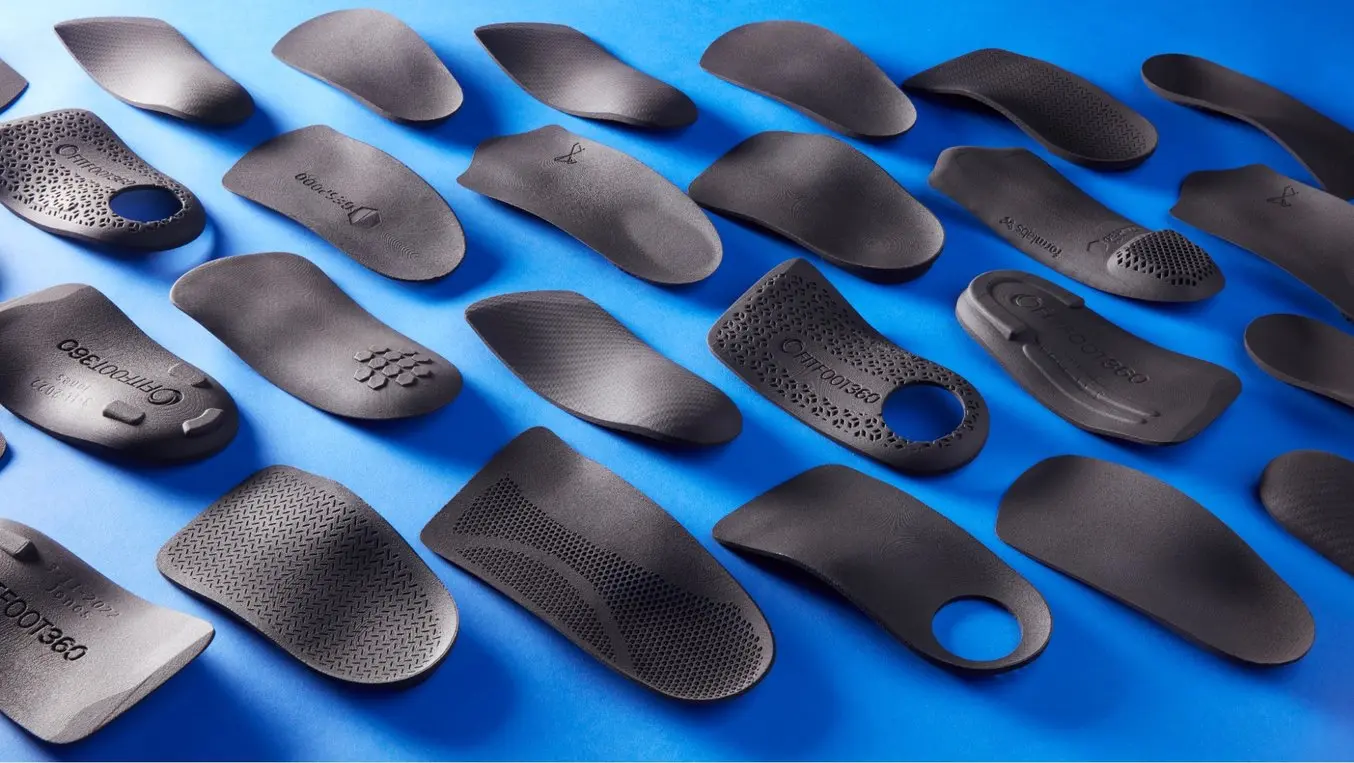Wednesday 6th December 2023
Wednesday 6th December 2023

In recent years, 3D printing technology has revolutionized various industries, and healthcare is no exception. One area where 3D printing is making significant strides is in the production of custom orthotics. Custom orthotic insoles designed through 3D printing offer a personalized solution for individuals with foot-related issues. This article explores the process of creating 3D printed orthotics and the benefits they bring to both patients and healthcare professionals.
Orthotics refers to custom-designed shoe inserts that provide support, correct alignment, and alleviate various foot and lower limb conditions. Traditional orthotics are often crafted through manual processes, but 3D printing is transforming this landscape.
The journey begins with a detailed scan of the patient’s foot. This digital data serves as the foundation for creating a precise 3D model, capturing the unique contours and nuances of the individual’s anatomy.
Healthcare professionals, often podiatrists or orthopedic specialists, use specialized software to customize the orthotic design. This step involves tailoring the insole to address specific conditions, such as plantar fasciitis, overpronation, or arch support.
Choosing the right 3D printing material is crucial. Flexible and durable materials like TPU (thermoplastic polyurethane) are common choices, providing the necessary support while ensuring comfort for the wearer.
The 3D printer follows the digital design, layer by layer, to construct the orthotic. This additive manufacturing process allows for intricate details and precise adjustments based on the individual’s needs.
Unlike traditional methods, 3D printing offers unparalleled precision in crafting orthotics. The digital design ensures that every contour and support element is meticulously reproduced in the final product.
One of the standout advantages is the ability to tailor orthotics for each patient’s unique anatomy and condition. This level of customization leads to improved comfort and better therapeutic outcomes.
The 3D printing process is relatively fast compared to traditional manufacturing. This enables healthcare professionals to provide patients with custom orthotics in a shorter timeframe.
If necessary, adjustments to the digital model can be made easily, and a new iteration can be printed. This flexibility is particularly beneficial in cases where fine-tuning is required.
Healthcare professionals adopting 3D printing for orthotics may need additional training to navigate the digital design and printing processes effectively
Ongoing research is essential to develop and refine 3D printing materials for orthotics. The ideal material should balance flexibility, durability, and biocompatibility.
Advancements in technology are paving the way for integrating biomechanical data and analytics into the design process. This could lead to even more precise and data-driven customizations.
3D printing aligns with the broader trend toward patient-centric healthcare. Custom orthotics exemplify a personalized approach that considers each patient’s unique physiology and needs.
The era of 3D printed orthotics is dawning, offering a transformative approach to addressing foot-related issues. As technology continues to advance, custom orthotics will likely become a cornerstone of patient-centric healthcare, providing comfort, support, and improved mobility for individuals with diverse podiatric needs.